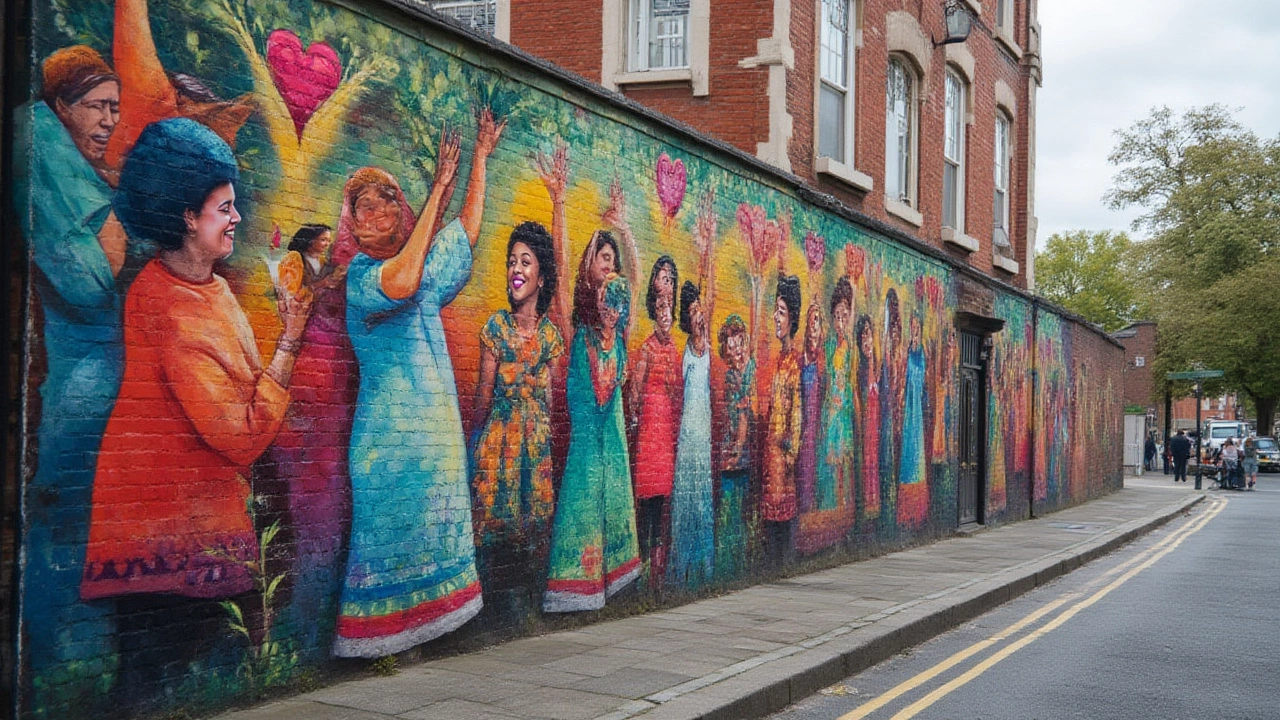When your mind feels messy and your heart aches, everyday life turns challenging. Emotional pain sticks around much longer than most bruises, slipping into everything you do—your work, your sleep, sometimes even your Saturday pancakes. The thing is, emotional wounds are invisible. No one throws you a get-well card or offers to sign your cast if you’re shattered on the inside. Healing emotionally isn’t about pretending to smile or ignoring pain. It’s about facing real feelings, which, to be honest, is much braver than people give credit for.
Understanding Emotional Wounds and Their Impact
It’s bizarre: you can go about your usual day—feed the cat, answer emails, even make jokes—but still feel like you’re moving through water. Emotional wounds are sneaky that way. They crash into your thoughts after an argument, haunt your mind after a breakup, or linger from hurtful things someone said years back. Unlike a physical cut, you can’t just slap on a bandage. Ignoring them doesn’t work. Pretending they don’t exist? Also, not helpful—trust me, I tried it for a full college semester. Research from Harvard Medical School shows that emotional pain triggers many of the same brain regions as physical pain. You really aren’t “too sensitive”; those feelings are as real as a sprained ankle.
Unchecked, emotional wounds mess with everything—your relationships, your energy, your confidence, even your body. The American Psychological Association found that chronic emotional distress can weaken your immune system, making you more likely to get sick. Sleep gets iffy. Appetite plays tricks on you. Ever craved a family-size bag of chips after a bad day? That’s not just emotional eating—it’s your body searching for comfort chemicals. Emotional wounds change your habits, sometimes before you realize it’s happening. That’s why healing isn’t just about “feeling better”—it’s about regaining control, clarity, and the ability to actually enjoy your life instead of sleepwalking through it.
Knowing you’re wounded is step one. Sometimes emotional pain looks like anxiety, sometimes it’s numbness. Other times, it’s uncharacteristic anger. If you’re snapping at friends or skipping out on things you once loved, that’s a signal. A 2023 study from Stanford University showed that people carrying unresolved emotional pain were twice as likely to struggle with decision-making. Being aware of what hurts—without judgment—opens the door to healing. Your feelings are real, and your pain is not trivial. Recognizing this, instead of brushing it aside, is the first sign you’re on the right path.
Facing Difficult Emotions: Why You Can’t Skip This Step
Nobody likes sitting with sadness, let alone anger, shame, or guilt. Most of us get good at dodging “bad” feelings by staying busy, binging on Netflix, or doom-scrolling until our thumbs cramp. But here’s the wild part: emotions don’t vanish when ignored; they just burrow deeper. Psychologist Susan David, PhD, wrote about how avoiding hard feelings leads to more distress, not less. Stuffing your feelings down may work for a night, but emotional energy finds a way out—usually at the worst moments.
So, how do you actually sit with tough emotions without being swallowed by them? Start with curiosity over criticism. Instead of, “Why am I such a mess?” try, “What is my sadness trying to tell me?” Sometimes I asked myself this question while making tea. Sometimes I cried behind the steering wheel. It doesn’t have to look poetic—it just has to be honest. Give your feelings names. “I’m anxious.” “I’m overwhelmed.” “I’m lonely.” This simple step can soften the sharpness and make emotions feel less scary. According to UCLA neuroscientists, labeling emotions lessens their intensity by reducing activity in the amygdala (the fear part of your brain).
Other ways to face feelings head-on include writing them out (journaling, scribbling, even texting yourself) or voicing them to someone you trust. When I shared my anxiety with Harvey, my spouse, for the first time, my problems didn’t disappear, but the relief was like exhaling after holding my breath too long. If sharing feels impossible, try art, music, or even physical movement (like walking or dancing in your kitchen). Emotions are energy—they need motion to process. Remember, there’s no timeline. Healing works like a spiral, not a straight line. Each time you revisit a feeling, you meet it with more understanding and less fear.

Practicing Self-Compassion and Forgiveness
Being your own worst critic is easy—being your own friend takes guts. When healing, most people beat themselves up for not “getting over it already.” I’ve done it myself: comparing my recovery speed to others, thinking I was weak for being sad, or replaying arguments with myself at 2 AM. This isn’t just unhelpful—it actually slows down recovery. Self-compassion, according to Dr. Kristin Neff, improves resilience, lowers anxiety, and helps people recover faster from emotional setbacks.
Self-compassion means treating yourself the way you’d treat a good friend. When a friend cries, you don’t scold them for being emotional. You offer comfort. So, comfort yourself. This could be as simple as wrapping up in a blanket, sipping hot chocolate, or telling yourself, “You’re allowed to hurt and heal.” Offer yourself patience—the toxic idea that emotions should resolve on a timetable is pure fantasy. Healing looks different for everyone; some wounds fade quietly, others take their sweet time. Trust the process and your timeline.
Forgiveness isn’t about erasing what happened or excusing someone else’s actions. It’s about letting go of the grip painful memories have on you. Research from John Hopkins Medicine links forgiveness to lower blood pressure and reduced risk of depression. Forgiving yourself is often the hardest step. Try writing a letter (that you never have to send) to yourself or the person who hurt you, expressing how you feel and what you want to release. Rituals help, too—some people burn their letters safely in a fireplace, others delete drafts as a signal to themselves that letting go is in progress. What matters most is your intent to move forward, even if the steps are tiny at first.
Creating Safe Boundaries and Seeking Support
Healing is brave work, but you don’t have to do it solo. Boundaries are your emotional fence—they protect your energy, your time, and your heart. You need them if you want to stay steady, especially around people who trigger old wounds. Healthy boundaries could mean declining phone calls, limiting time on social media, pausing tough conversations, or saying “no” without guilt. If that feels scary at first, remember: boundaries are for safety, not punishment.
Quality support also matters. That can mean different things: a good therapist, an empathetic friend, or even a support group. In fact, a study published in the American Journal of Psychiatry found that people who regularly attended support groups for emotional healing recovered 32% faster than those who tried to deal with their pain alone. Therapy is nothing to be ashamed of—think of it as training for your mind like you’d train at the gym. If traditional therapy isn’t accessible, many free online communities now offer peer-to-peer support where you can vent, listen, and share resources.
Not all advice is good advice; sometimes loved ones want the best for you but don’t really understand. That’s why trusted, trained support makes a huge difference. Leaning on loved ones is healthy but remember to respect their limits, too. When Harvey, my spouse, needed breaks from deep talks, I found comfort in a journaling app that helped me vent when humans got tired. If you feel isolated, consider joining online groups focused on *emotional healing*. Even texting a helpline can be a big first step. Whatever you choose, prioritize spaces where you can be your authentic, unfiltered self—without shame or drama.

Nurturing Long-Term Healing Through Daily Habits
Recovering emotionally isn’t just about what you do in huge life moments; it’s about tiny daily acts. Consistency makes new patterns for your brain and helps keep pain from taking over again. Science backs this up—a 2022 study from the University of Toronto found that people who adopted simple self-care routines showed a 21% drop in anxiety symptoms after three months. These habits build strength slowly, but their impact grows unexpectedly big.
Try starting your day with a few deep breaths before reaching for your phone. Even two minutes of mindful breathing can steady your mind and improve your mood for hours. Journaling isn’t just for poets—a three-minute brain dump in the morning or before bed helps you process emotions and track your growth. I use sticky notes with kind words on my mirror (sometimes cheesy, always helpful). If you need more structure, there are phone apps that prompt you to check in with your feelings each day.
Moving your body matters, too. Physical activity, even a gentle 15-minute walk, boosts serotonin and endorphins. If you’re not a “fitness person,” find something playful: join a dance class, try hula-hooping, or take your dog to a new park. Nutrition plays a supporting role—you’ve probably noticed how skipping meals or eating only snacks crashes your mood. Stable blood sugar means a more even state of mind. Aim for real meals, not just coffee and hope.
Don’t underestimate sleep—a single disrupted night can double next-day irritability. If insomnia creeps in, set a wind-down routine: dim the lights, lower screen time, or listen to gentle music. My go-to is a lavender candle and ten minutes of slow stretching. Celebrate your smallest wins—the brain loves little rewards. Did you set a boundary? Acknowledge it. Did you feel sad, but showed up anyway? Celebrate. Over time, these little rituals rebuild trust with yourself, transforming emotional wounds into reminders of your strength.
| Strategy | Reported Benefit | Research Source |
|---|---|---|
| Journaling | 23% reduced stress scores | UCLA Mindful Awareness Research Center, 2021 |
| Emotional Labeling | Lowered amygdala activity | UCLA Neuroscience Study, 2022 |
| Physical Movement | 30% boost in endorphins | Stanford Physical Health Report, 2023 |
| Support Groups | 32% faster recovery rates | Am. Journal of Psychiatry, 2022 |
| Mindful Breathing | Reduces anxiety in 2 weeks | Harvard Medical School, 2023 |
- Give emotions a name so you don’t get lost trying to avoid them.
- Treat yourself as gently as you’d treat your favorite person on their worst day.
- Draw boundaries to shield your energy, guilt-free.
- Make small, real self-care practices a part of your routine.
- Reach for support when you need it—healing with others is often easier than battling alone.
Pain isn’t proof you’re weak—it just means you’re human. If emotional healing feels messy, it just means you care deeply and want to grow. Those little steps you choose every day add up, slowly turning pain into strength. Keep going. Your wellbeing is worth it.
